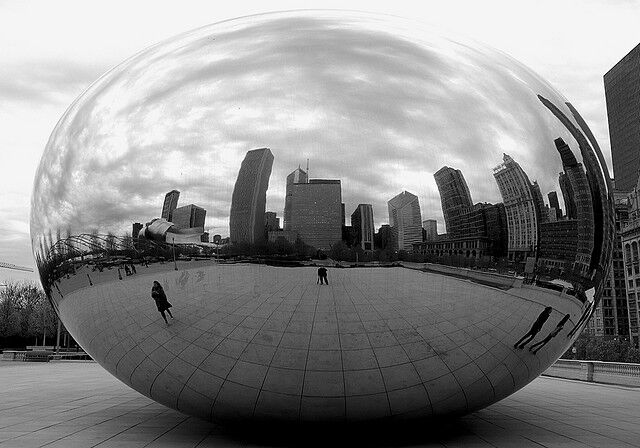-
An image is a copy of an object formed by light rays intersecting.
-
The characteristics of an image make it possible to describe the properties of an image obtained through a light phenomenon such as reflection or refraction.
There are four characteristics for describing a resulting image.
The nature (or type) of an image indicates whether the resulting image is real or virtual.
The nature of the image can be described as follows.
-
A real image is produced when light rays concentrate, or converge, on a screen or on a wall.
-
A virtual image is observed only through an optical device (such as a mirror or a lens): it cannot be seen. It is obtained graphically by drawing the extensions of the reflected or refracted rays that will converge at a single point.
In the lab, it is possible to obtain a real image, because it can be viewed on a screen. However, the virtual image is impossible to obtain on a screen because it appears to be formed behind the optical device.
In mirrors, a virtual image is formed on the opposite side of the mirror to the object, while in lenses, the virtual image is formed on the same side as the object relative to the lens.
The image observed on a cinema screen is a real image, since it comes from a light source illuminating a film. The image obtained is captured on a screen.
The image we see when we look at ourselves in the mirror is a virtual image, as it would be impossible to place a screen in front of this type of mirror and obtain an image of us.
Image size is used to compare the size of an image relative to the size of the object producing that image.
The size of an image can be qualified in three different ways:
-
the image can be larger than the object;
-
the image can be of the same size as the object;
-
the image can be smaller than the object.
Some mirrors allow you to magnify the image, which can be handy when applying makeup.
The side mirrors of a car are formed by a convex mirror that produces an image smaller than the object. The use of this type of mirror distorts not only the size of the object, but also its position. This explains the note appearing on side mirrors: “Objects in the mirror are closer than they appear.”
The direction of the image differentiates between upright images and inverted images.
There are two possible image directions.
-
An upright image is an image in the same direction as the object.
-
An inverted image is an image upside down from the direction of the object.
Plane mirrors make it possible to obtain upright images, since the object and the image are in the same direction.
Lenses act like curved mirrors by reversing the direction of the image relative to the object. This principle is similar to that observed in microscopes or in the eye.
Image position compares the distance between the object and the mirror (or lens) versus the position between the image and the mirror (or lens).
The position of an image can be described in three different ways:
-
the image is closer to the mirror (or lens) than the object;
-
the image is at the same distance from the mirror (or lens) as the object;
-
the image is further from the mirror (or lens) than the object.
In this globe, the photographer appears much further from the globe than he actually is.

Plane mirrors produce images that are at equal distances from the object.






